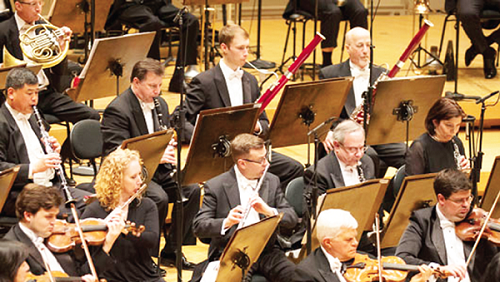
The Orchestrated Cure of Childhood Cancers
I woke up this morning to the reverberation of one of my favourite classical pieces - Beethoven’s 9th - as performed by the Chicago Symphony Orchestra in memory of “Charlie” who would have turned 19 on the day of the performance (September 18).
In Kumasi, the Celestial Evangel Choir Ghana (#CEC) under the leadership of Dr Albert Adusei Duah and Mr Michael Paa Kwesi Ampomah stages the annual Hope Alive Concert, raising awareness for childhood cancers while honouring the memory of the late Yaa Adwoboa Owusu (RIP).
Advertisement
I find that music composed for and performed by a choir and/or an orchestra is akin to how a global community of parents, the “lay” community, scientists, and hundreds of clinical and non-clinical hospital staff combine their various expertise, including advocacy and fundraising; drug development; clinical trials and care; supportive care; nursing; palliative care; psychological and social support; etc. to ensure that one child, any child wins his or her battles against cancer. - "It takes a village to cure cancer”
The Rehearsal: Treatment Planning and Forecasting
Musicians, no matter how experienced and/or how often they have played a particular piece, even one composed by themselves, practise for months to ensure that they achieve almost perfect delivery for sometimes, no more than an hour’s performance. - *“Every Performance is unique”
Similarly, a community or “village” of experts will commune with each other severally, planning and weighing various treatment options against their risks and benefits versus expected results (outcomes) in a bid to come up with the best solution under the circumstances to battle a child’s cancer. - “Every child is unique; even if the cancers are the same”.
The Movements: Phases of Treatment
In music, a movement usually refers to a principal division of a longer musical work, complete with its own key, tempo, and structure. Beethoven’s 9th (In D Minor Op. 125) for instance, is between 60 to 70 minutes long depending on the tempo and comprises four movements.
Similarly, there are different phases of the very long journey of cancer management from detection through the confirmation of the diagnosis to the treatments and then recovery, follow-up, rehabilitation, and occasionally, integration back into communities. Just as in any movement in music, there are ups - *fortes*; *crescendos*, when the music is its loudest - and downs - *pianissimi*; *decrescendos*, when the music is its softest. - “We live, cry and rejoice together, through it all”
The Maestro: The Paediatric Oncologist
I have had the privilege of sitting through several fastidious rehearsal sessions with such ardour of the #CEC. It is a lot of work. On the day of the performance, I find that it all boils down to leadership: down to that distinguished director or conductor who usually interprets the score and with meticulous gestures, directs the orchestra and/or the choir as to how loud, soft, very loud or very soft to play sensitive portions of the music. She/he is the Maestro.
Similarly, in cancer care, the oncologist will usually coordinate the care of a child with cancer, bringing together all relevant experts at the right time to provide essential treatments to work towards ensuring a desirable outcome. Over the hills and down the valleys of your cancer journey, the oncologist leads the way. - “Every gesture counts to complete the music”.
The Audience: The larger Community
In the stillness of silent tranquil, the audience engages the performers in active listening; each member at any point in time picking out where to focus their gaze, attention, and appreciation. Patiently, they wait to hear their favourite instruments come through the organised chaos of the others, which momentarily will be relegated to the background.
And at the end, amidst the “bravos” they render their applause in appreciation of months of tireless practice, culminating in just over a period of a flawless performance. The larger community — the church, the mosque, the school, the revellers, the family, and friends, etc. - we are the audience. The Choir and Orchestra are playing for us, shall we distract them or support them? Sometimes all that you need to support is to be there and to listen; then at the end of it all, let your applause reach a crescendo loud enough to bring the maestro back on stage for more. “Commit; Contribute; Comfort and Care for the Child with Cancer”
Sing the Childhood Cancer Song; Support Children with Cancer to Fight. Be their Support.
The writer is a childhood sickle cell and cancer expert. The writeup was done to commemorate Childhood Cancer Awareness Month which was observed in September.




